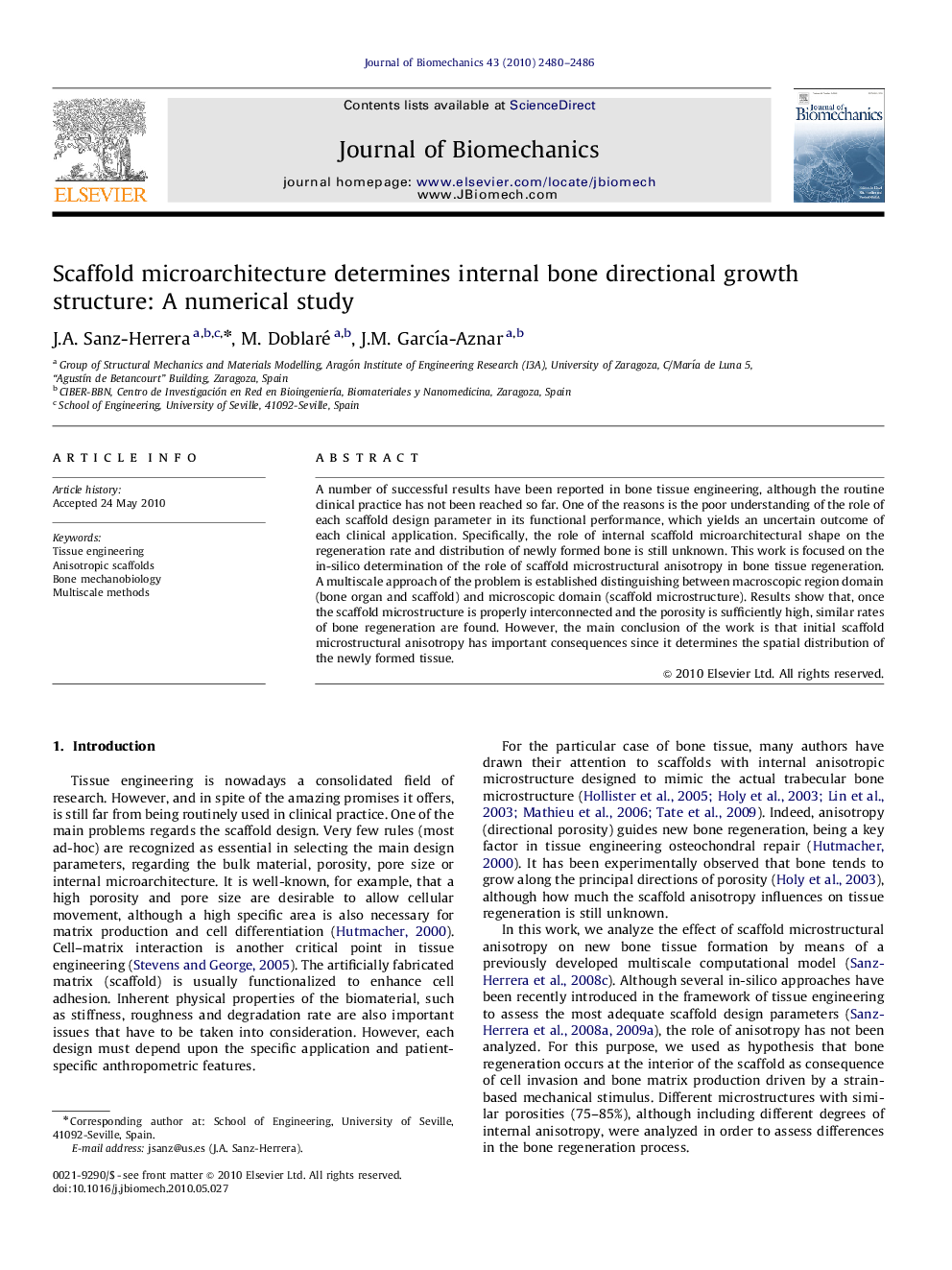| Article ID | Journal | Published Year | Pages | File Type |
|---|---|---|---|---|
| 873169 | Journal of Biomechanics | 2010 | 7 Pages |
A number of successful results have been reported in bone tissue engineering, although the routine clinical practice has not been reached so far. One of the reasons is the poor understanding of the role of each scaffold design parameter in its functional performance, which yields an uncertain outcome of each clinical application. Specifically, the role of internal scaffold microarchitectural shape on the regeneration rate and distribution of newly formed bone is still unknown. This work is focused on the in-silico determination of the role of scaffold microstructural anisotropy in bone tissue regeneration. A multiscale approach of the problem is established distinguishing between macroscopic region domain (bone organ and scaffold) and microscopic domain (scaffold microstructure). Results show that, once the scaffold microstructure is properly interconnected and the porosity is sufficiently high, similar rates of bone regeneration are found. However, the main conclusion of the work is that initial scaffold microstructural anisotropy has important consequences since it determines the spatial distribution of the newly formed tissue.
